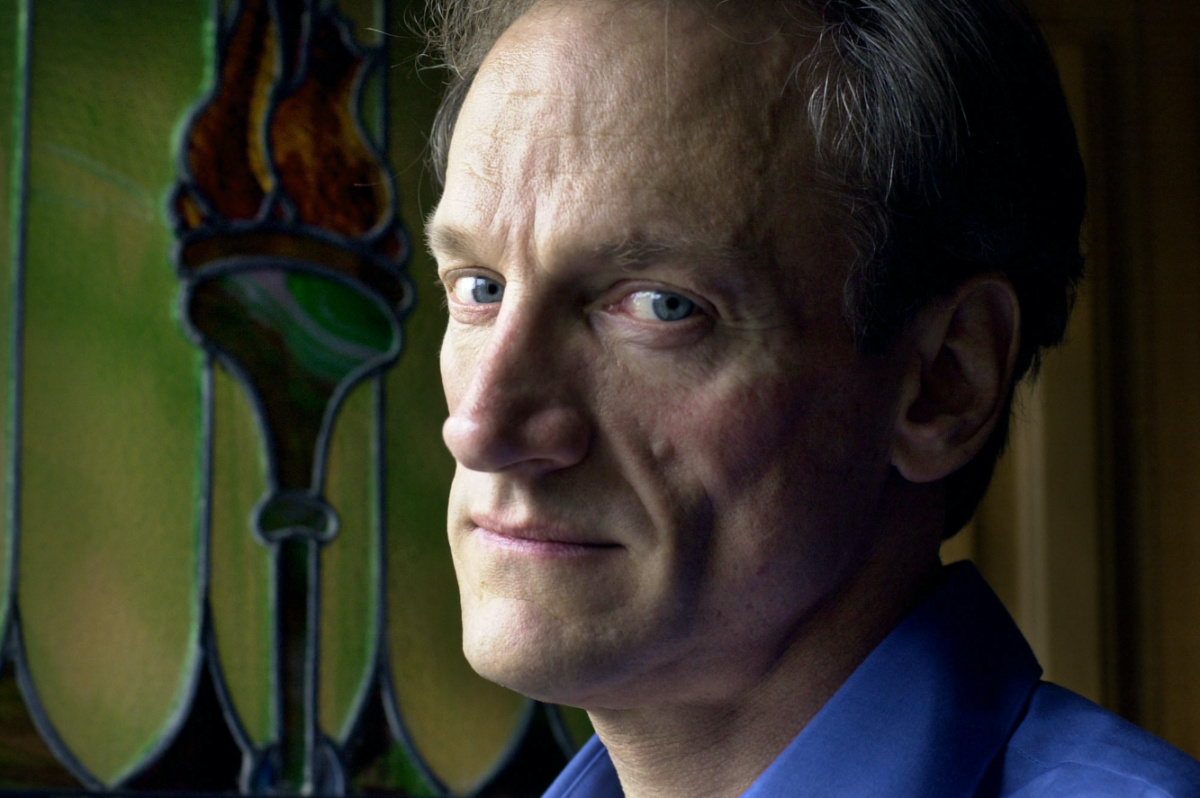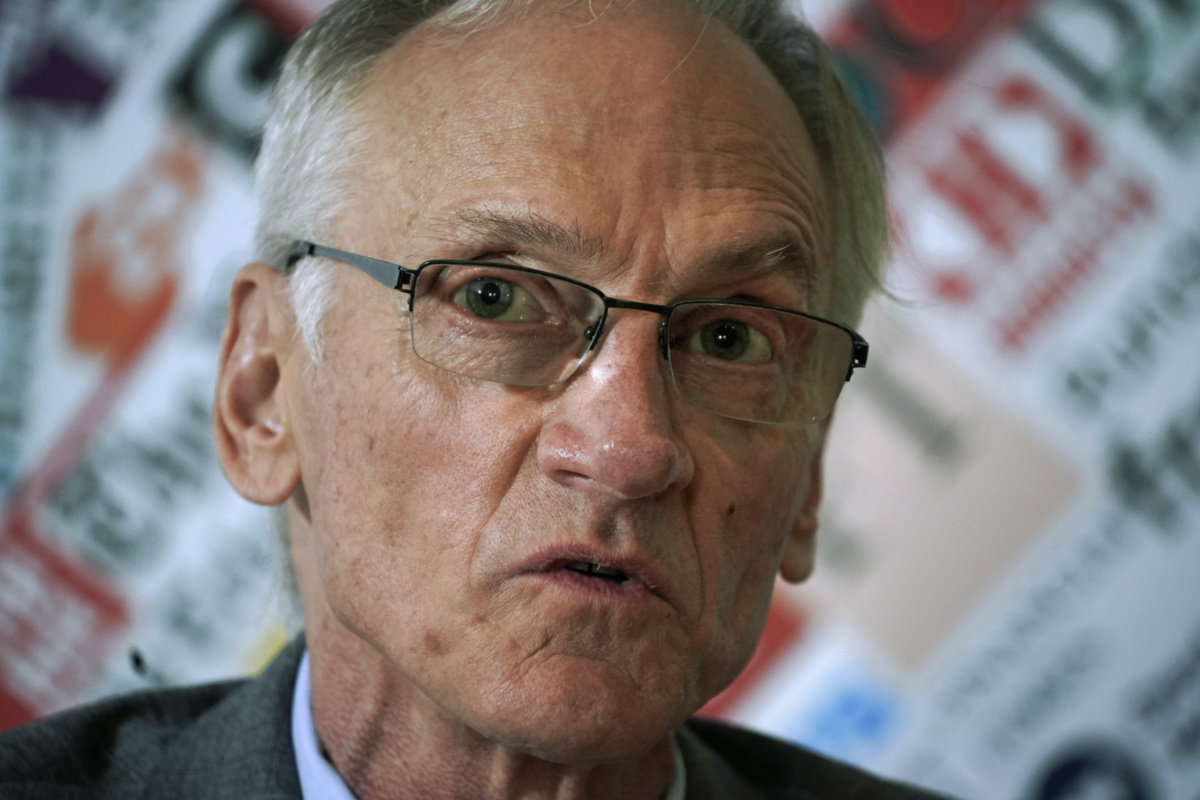Updated: 11.45am (AEDT)
Boston, Massachusetts, US
AP
Phil Saviano, a clergy sex abuse survivor and whistleblower who played a pivotal role in exposing decades of predatory assaults by Roman Catholic priests in the United States, has died. He was 69.
Saviano’s story figured prominently in the 2015 Oscar-winning film Spotlight about The Boston Globe’s investigation that revealed how scores of priests molested children and got away with it because church leaders covered it up. He died on Sunday after a battle with gallbladder cancer, said his brother and caregiver, Jim Saviano.

In this 15th February, 2002, file photograph, Phil Saviano, regional coordinator for the Survivors Network for those Abused by Priests, poses for a portrait in his Boston home. Saviano, a clergy sex abuse survivor and whistleblower who played a pivotal role in exposing decades of predatory assaults by Roman Catholic priests in the United States, has died on Sunday, 28th November. He was 69. PICTURE: AP Photo/Steven Senne/File photo.
In late October, Phil Saviano announced on his Facebook page that he was starting hospice care at his brother’s home in Douglas, Massachusetts, where he died.
“Things have been dicey the last few weeks,” he wrote, asking followers to “give a listen to Judy Collins singing Bird On A Wire and think of me.”
Saviano played a central role in illuminating the scandal, which led to the resignation of Boston’s Cardinal Bernard Law and church settlements with hundreds of victims. The Globe‘s 2002 series earned it the Pulitzer Prize for Public Service in 2003, and Spotlight won Academy Awards for best picture and best original screenplay. Actor Neal Huff played Saviano in the film.
“My gift to the world was not being afraid to speak out,” Saviano said in mid-November in a brief telephone interview with The Associated Press.
Born on 23rd June, 1952, Saviano recalled going to confession as a young boy at St Denis Church in tiny East Douglas, Massachusetts, in the 1960s and whispering his transgressions through a screen to Rev David Holley. The priest, he said, violated that sacred trust and forced the 11-year-old to perform sex acts. Holley died in a New Mexico prison in 2008 while serving a 275-year sentence for molesting eight boys.
“When we were kids, the priests never did anything wrong. You didn’t question them, same as the police,” brother Jim Saviano told the AP. “There were many barriers put in his way intentionally and otherwise by institutions and generational thinking. That didn’t stop him. That’s a certain kind of bravery that was unique.”
A self-described “recovering Catholic,” Saviano went on to establish the New England chapter of the Survivors Network of Those Abused by Priests, or SNAP, an organization working to bring specific allegations of clergy sexual abuse to light.
His faith in the church shattered, Saviano instead leaned on politicians and prosecutors to bring offenders to justice.
“We’re putting our faith in legislators and prosecutors to solve this problem,” he told reporters in 2002.
“Phil was an essential source during the Spotlight Team’s reporting on the cover-up of sexual abuse in the Catholic Church, providing other critical sources, research materials and the names of several accused priests,” said Mike Rezendes, a member of the Globe team that brought the scandal to light and a current AP investigative reporter.
“He also shared his own heartbreaking story of abuse, imbuing us with the iron determination we needed to break this horrific story,” Rezendes said. “During our reporting, and over the last 20 years, I got to know Phil well and have never met anyone as brave, as compassionate or as savvy.”

In this 17th February, 2020, file photograph, Phil Saviano, of BishopAccountability.org, talks to the media during a press conference at the Foreign Press association headquarters, on the occasion of the first anniversary of Pope Francis’ summit on clergy abuse, in Rome. PICTURE: AP Photo/Andrew Medichini/File photo.
Saviano earned degrees in zoology and communications from the University of Massachusetts-Amherst and Boston University and began working in hospital public relations. Later, he shifted to entertainment industry publicity and concert promotion, working closely with Collins, a lifelong friend and confidante, as well as Ella Fitzgerald, Mel Torme and other artists.
In 1991, he became seriously ill with AIDS and went public with his childhood abuse the following year, becoming one of the first survivors to come forward.
“Father Holley forced me and two of my friends to have repeated sexual contact with him,” Saviano said in an interview with the Globe – the first of many that would lead not only to criminal charges against the disgraced cleric but widespread prosecutions of others as the enormity of the scandal became evident.
By the early 2000s, Saviano was spending 10 hours a day on the phone with victims and journalists. He was an outspoken critic of the Vatican’s reluctance to deal decisively with the fallout from the scandal. In 2008, when Pope Benedict XVI hinted to US bishops during a visit that they’d mishandled the church’s response, Saviano questioned the pontiff’s decision to follow his remarks with Masses in New York and Washington.
“If he was really serious about the issue, that Mass would not be held in New York. It would be held here in Boston,” he said.
We rely on our readers to fund Sight's work - become a financial supporter today!
For more information, head to our Subscriber's page.
In 2009, suffering kidney failure and unable to locate a match among family or friends, he found a donor after SNAP spread the word in a nationwide email to 8,000 clergy sex abuse survivors.
The abuse that came to light as a result of Saviano’s work prompted Cardinal Law, Boston’s highest-ranking churchman, to step down. The Globe‘s reporting showed Law was aware of child molesters in the priesthood but covered up their crimes and failed to stop them, instead transferring them from parish to parish without alerting parents or police.
When the Archbishop died in Rome in 2017, Saviano asked bluntly: “How is he going to explain this when he comes face-to-face with his maker?”
In 2019, at the Vatican for an abuse prevention summit called convened by Pope Francis, Saviano said he told summit organisers to release the names of abusive priests around the world along with their case files.
“Do it to launch a new era of transparency. Do it to break the code of silence. Do it out of respect for the victims of these men, and do it to help prevent these creeps from abusing any more children,” he said.
Although there was a hard edge to much of his life, Saviano enjoyed traveling extensively and developed a soft spot for Indigenous art. In 1999, he launched an e-commerce website, Viva Oaxaca Folk Art, showcasing handmade decorative pieces he purchased on trips to southern Mexico and resold to collectors across the US.
He is survived by three brothers, Jim Saviano of Douglas; John Saviano of Douglas; and Victor Saviano of Boston; two nieces; and two nephews. A funeral Mass was scheduled for Friday at St Denis Church in East Douglas.





